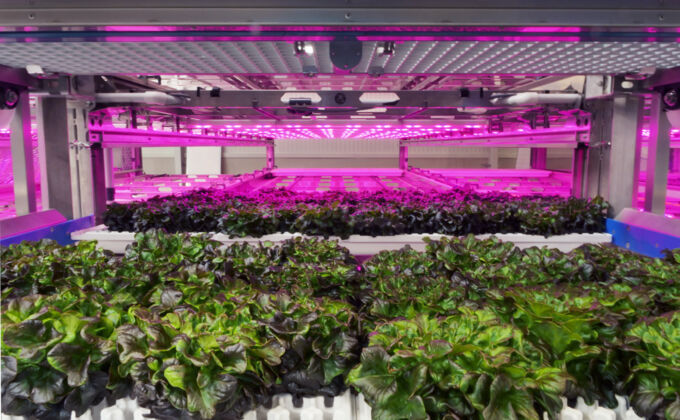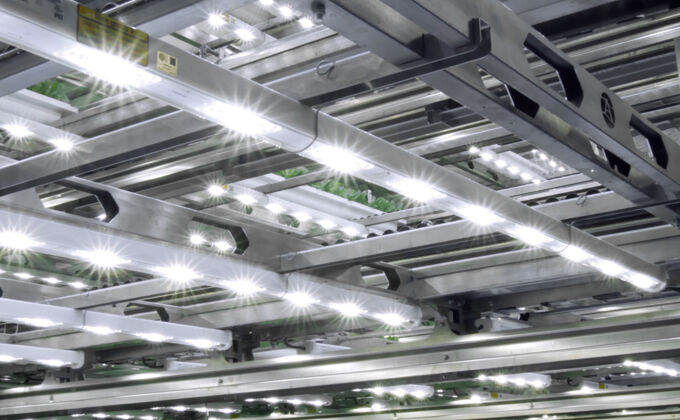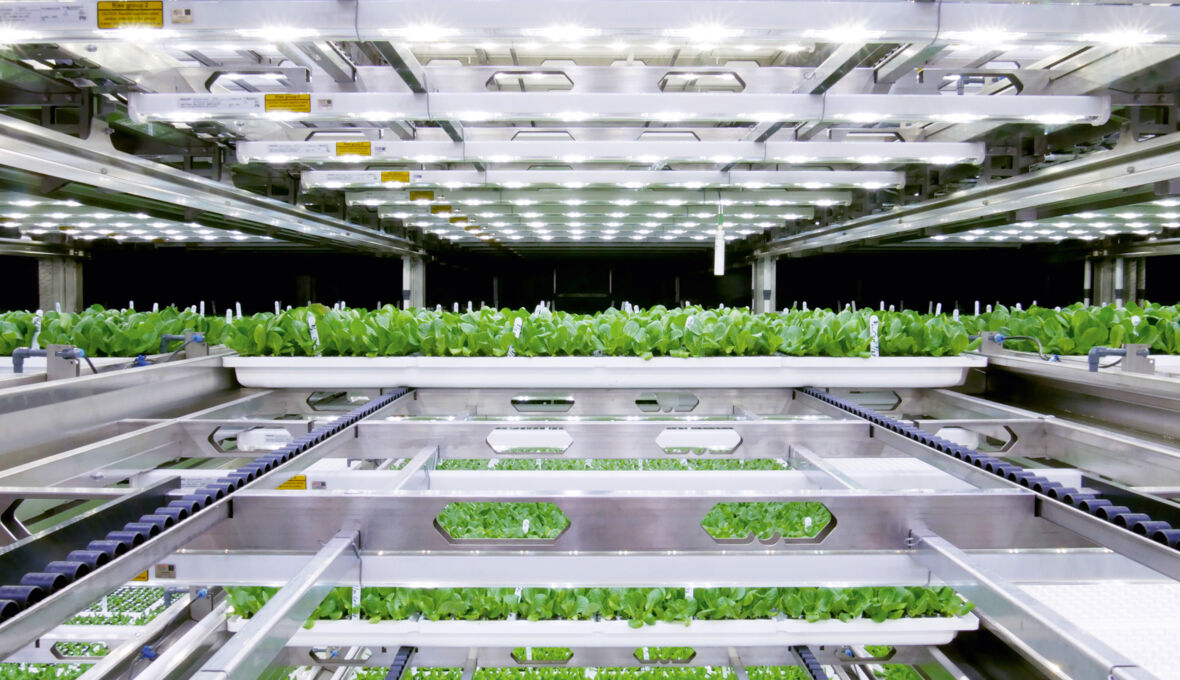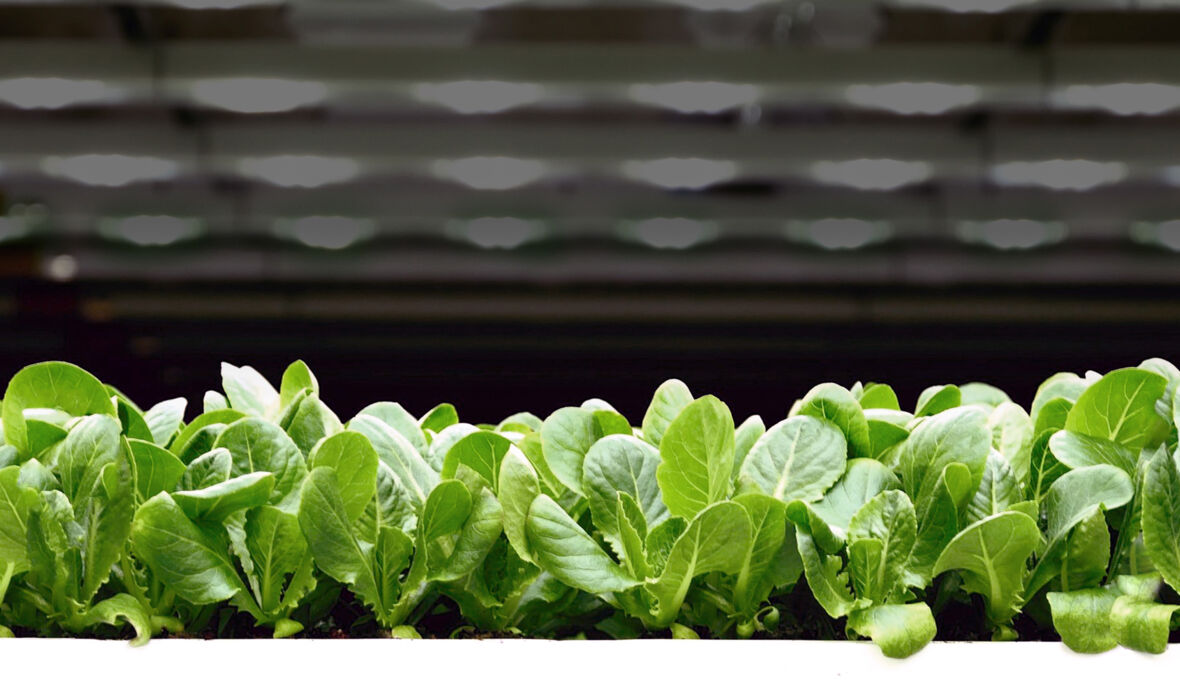
Vertical farming revolutionizes agriculture
Artechno Growsystems BV
When it comes to vertical farming, plants do not grow in open fields: They are cultivated in a closed, controlled environment – on several growing areas arranged one above the other. The precise dosage of light, climate, water, and nutrients creates optimal growing conditions. Worthwhile automation reduces labor costs. The Dutch company Artechno Growsystems has perfected this type of system. They are operated and visualized with atvise® scada from Bachmann.
Considerations of relocating agricultural production to multi-story buildings are nothing new. The idea already emerged in Europe in the 1960s. Against the backdrop of global population growth and the fact that around 80 per cent of people will be living in urban centers in the next three decades, vertical farming is taking on a whole new significance: In order to meet the food requirements of an additional three billion people, existing land resources are no longer sufficient for traditional agricultural cultivation. Irrespective of this, scientists fear massive environmental damage due to the associated water consumption and inputs of fertilizers and pesticides. In contrast to conventional farming methods, vertical farming also enables season independent crop production and year-round harvests. The cultivated areas are protected from extreme weather events due to ongoing climate change, which guarantees secure yields.
Revolutionized – and perfected
The Dutch company Artechno Growsystems has now revolutionized the idea of vertical farming with its AVF+ systems: From a perfect combination of light, climate, water and nutrients, the innovative company creates optimal growing conditions for plants. Together with worthwhile automation of agricultural processes from sowing to harvesting, they also reduce manual labor to a fraction of that required in traditional farming.
In AVF+ systems, around 99 percent less water is needed compared to conventional vegetable production, because the water used is recycled and returned to the system. The remaining fertilizer amount in the reused water is analyzed, and only what is missing is added. The use of fertilizers can also be reduced by more than 60 percent with this approach. Furthermore, cultivation in an environment protected from impacts means that pesticides can be dispensed with entirely.
Economy with light and (still) shadow
Depending on the plant variety, Artechno has managed to expand the harvest per year to up to 100 kg per square meter of cultivated area. That easily equals five times the amount which can be reached in conventional cultivation. This has been achieved thanks to the worldwide unique climate chambers concept of Artechno: In the cells, which are around 8 meters high, the growing areas are arranged in ten layers placed on top of each other, where the temperature deviation is less than 1 degree Celsius. “The climate cell provides the perfect space for balancing temperature, humidity, and CO2. Our unique airflow principle distributes the climate homogeneously on each layer, always giving the plants exactly what they need for strong and healthy growth,” says Ruud Jansen, co-owner at Artechno Growsystems.
The engineer sees potential to optimize the energy consumption. The light required for plant growth still consumes too much of it, he says. However, tests with even more economical LED lights, changes to the cell surface design to better reflect the light, as well as the use of electricity from renewable sources open up new potential: “Since the plants need CO2 to grow, the facility even achieves a positive CO2 balance,” says Jansen.
Scalable from small to large
Artechno‘s systems are completely scalable, from small 15 m2 systems used for research and development of cultivation recipes, to climate cells with a cultivation area of 960 m2. The whole concept is designed in such a way that the cells can in turn be combined with each other, allowing cultivation areas of up to 20,000 m2 to be achieved – depending on the needs of the plants, the available space, and the desired production volume. The logistics of the complete harvesting line – sowing, loading, and unloading the cells, harvesting, and finally cleaning floats and trays – is also designed in a modular way and can be fully automated: “Our customers can start with a few key components and scale their automation and operation as they grow,” explains Ruud Jansen.
Enthusiastically monitored and controlled
Full automation of the entire cultivation process guarantees consistent crop production on the one hand, and low labor costs on the other. Monitoring and operation are handled centrally from one location – with atvise® scada from Bachmann Visutec. For the front end, Artechno relies on the 15.6“ OT1215 web terminals from Bachmann, which deliver a lot of computing power with their dual-core processors. The industrial touch panels are supplied as a bundle with pre-installed atvise® scada. Therefore, they enable on-site operation and simultaneously function as a full-fledged SCADA server.
This solution is unique for him, says Jansen enthusiastically. “The implementation in pure web technology allows our customers to monitor and operate the system on a mobile basis and with a wide variety of end devices. Completely without hurdles, responsive in every viewport.” The powerful project planning also gives his engineering team a lot of freedom for the efficient implementation of the applications, especially in the scaling and expansion of the cells to larger plants. In this context, the communication via OPC UA was also important for the system decision in favor of atvise®: When the farms are expanded, additional data points can be easily integrated, the system remains continuously synchronized with the overall architecture – without information loss, and without interface adaptations. Moreover, atvise® allows online engineering, which makes commissioning of complex plants much easier. “In addition, the HMI builder comes in handy. It creates the basis for the modern look & feel of our user interfaces,” says Jansen happily.
Still a lot of potential
Vertical farming would neither displace cultivation in greenhouses nor cultivation in the field, Jansen explains. But it does offer a way to better deal with the challenges of the future, he says, saving water and reducing water pollution. The small footprint of an enclosed volume also makes it possible to move production closer to consumers, reducing costs and emissions due to transporting goods, he adds. Furthermore, vertical farming could make countries with difficult environmental conditions less dependent on food imports, he says. “We are also researching how we can make the cultivation of fruits less season-dependent and more productive in future, in addition to the cultivation of leafy vegetables and herbs,” the co-owner gives an outlook. Strawberry plants are particularly suitable for this purpose.
Jansen’s goal with Artechno is to grow and become the world‘s leading supplier of such cultivation systems. He feels that Bachmann is a good partner for this: “We can build on state-of-the-art technology. In addition, we receive excellent support over a short distance, which is important for the further development of our systems.”
Client: Artechno Growsystems BV – Homepage
Industry: Vertical farming
Project(s): Optimal growing conditions through atvise® scada
Product: atvise® panel bundle
Controls: Beckhoff









